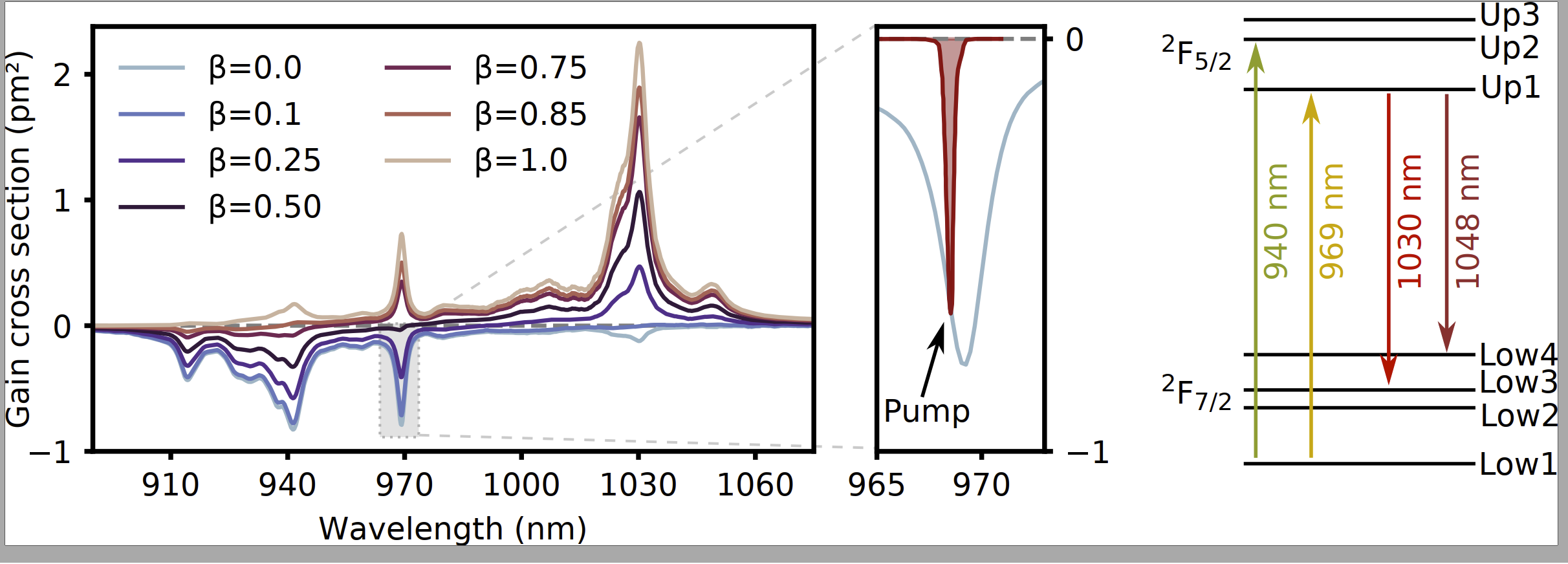
The image I am showing here can be found in my thesis and the references for the data are therein (thesis here). The left image shows the gain cross section of Yb:YAG, typically a quasi-three or three-level system, with the energy structure on the right. On the left the different curves are for a system in the ground state at room temperature ($\beta=0$) up to full inversion ($\beta=1$). If you pump the system at 969 nm (Low1 to Up1) you have a true 3-level system, pumped at 940 nm, a quasi-three-level system
So, you are confusing some terms and concepts of lasers, and your question would apply to both four- and three-level laser systems.
First: as Garyp explained, you need to understand that stimulated emission only occurs at the exact energy difference, as in your case $E2-E1$ for example and that the device built around your medium is what creates a positive feedback for the amplification to happen: one photon is spontaneously emitted in the direction of your laser cavity and is reflected back into the medium, allowing for this photon to now induce stimulated emission of the same energy.
Secondly, if you can clear that confusion that stimulated emission indeed occurs for a single energy, than you understand that your second question is a product of that confusion.
You see, you do not need the pump or any other mechanism to start the seeding process for stimulated amplification, because you build a resonator around your medium to allow for the positive feedback, to catch any spontaneously emitting photon that happens to be emitted in the direction of the laser cavity.
In a system you want to decouple the absorption of the pump, through stimulated absorption, as Garyp mentioned, from the actual laser at a higher wavelength (for several technical reasons). See the case of the image I showed you. I pump at 969nm, a wavelength (or frequency, if you convert it) on a line that is narrow and absorbs most of the light... Now the system gets a population inversion: I take electrons from the Low1 level to the Up1 level. This creates an imbalance between the populations of Up1 and Low3 (the wavelength at which I was operating my laser), with Up1 having more electrons than Low3. Now spontaneous emission, between those levels starts occurring, if any photon happens to be in the direction of my cavity then it gets amplified as this photon will be passed many times through the gain medium, taking electrons from the Up1 to the Low3 and increasing the number of present photons with 1030 nm.
Some interesting technicalities of Yb:YAG, operating at 1030 nm and pumped at 969nm:
-You can only achieve 50% inversion between Low1 and Up1, which at that point the medium becomes transparent: for every absorbed photon, on average, one is also stimulated.
-When pumped at this wavelength, the difference between the energies of the pump photons to those of the laser is only 6%, making it one of the lowest differences in all current solid-state lasers. This ensures low thermal energy deposition in the system after the Low3 level decays into the Low1 level.
Hope this helped clear some more confusion.

